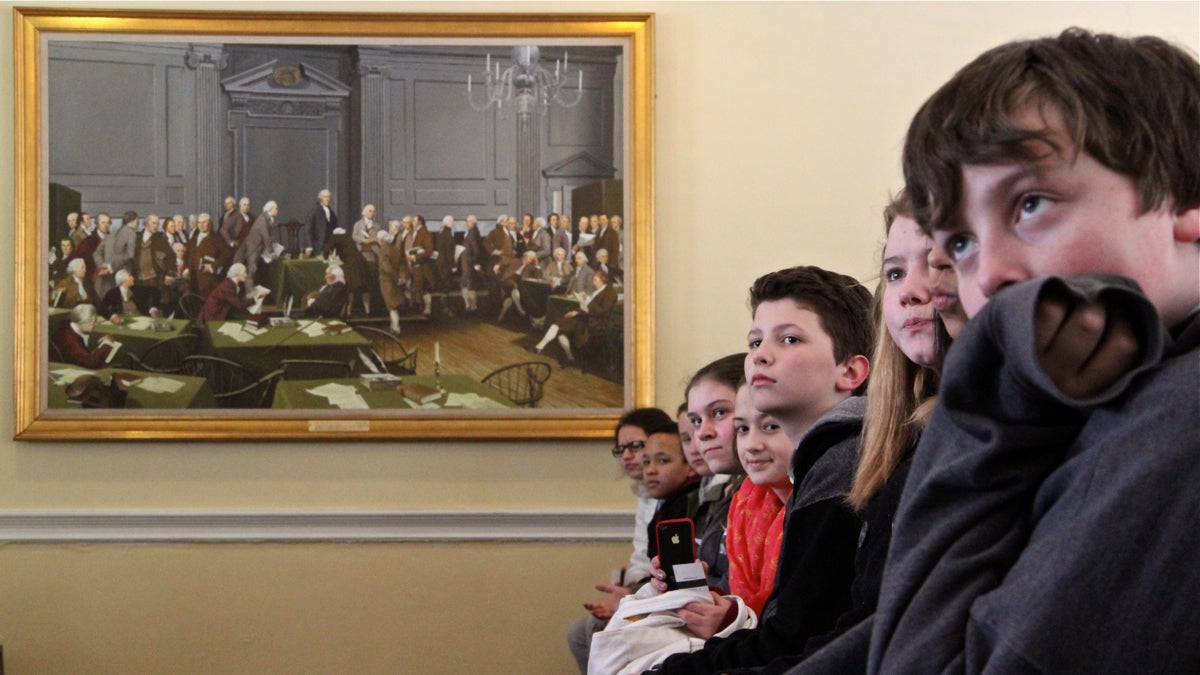Seventh-graders mix history, literature in study of Philadelphia’s 1793 yellow fever epidemic
Listen
Seventh-graders from the Alexander Adaire School learn about 18th-century Philadelphia during a trip to Independence Hall as part of an integrated social studies and English curriculum focused on the city's 1793 yellow fever epidemic. (Emma Lee/WHYY)
More than two centuries ago, an outbreak of yellow fever hit Philadelphia — then the largest city in the fledgling United States — and wiped out about 10 percent of the population. Now, one Philadelphia public school is using a young adult novel to impart history and foster a love of reading.
The book at the center of the new curriculum at Fishtown’s Alexander Adaire School is Laurie Halse Anderson’s “Fever 1793.” The text follows 14-year-old Matilda as she struggles to keep her family coffeehouse in business and watches yellow fever wreak havoc on the city.
“This is the first time that we discovered this book,” said English teacher Christina Long, who helped design the unit. “I was like, oh my goodness, this is perfect.”
Social studies teacher William McGeehan said he was highlighting the disease’s connection to slavery.
“The fever came over with refugees from the Haitian revolution,” he said. “Those white refugees who were fleeing Haiti brought the yellow fever with them.”
To make the instruction come alive, the seventh-grade classes visited Independence Hall and other Philadelphia landmarks.
“We’re going to where she lived, and you can actually feel how she felt in that time,” said Jenna Waclawski, a seventh-grader, of the book’s main character.
Student teacher Arthur Dennis said the field trip provided important context for the students.
“Just walking through a grave site of the yellow fever victims, it really kind of hits home,” he said.
Several students were baffled by 18th-century medical beliefs, especially the prevailing theory of the 1793 epidemic put forward by the pre-eminent physician of the day, Dr. Benjamin Rush. He suspected rotting coffee beans along the wharf were behind the outbreak, not virus-laden mosquitoes.
Next year, the Alexander Adaire faculty plans to incorporate more science and make a truly interdisciplinary course of study. But Long said they’ve already used Philadelphia’s 222-year-old yellow fever experience to discuss how societies react to diseases, including today’s Ebola epidemic.
WHYY is your source for fact-based, in-depth journalism and information. As a nonprofit organization, we rely on financial support from readers like you. Please give today.

